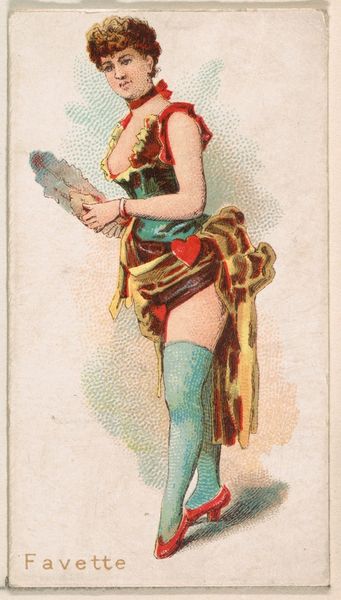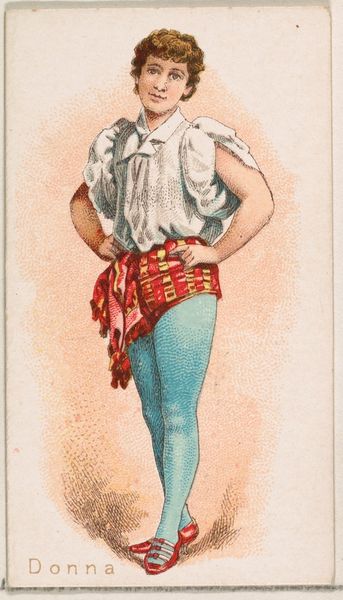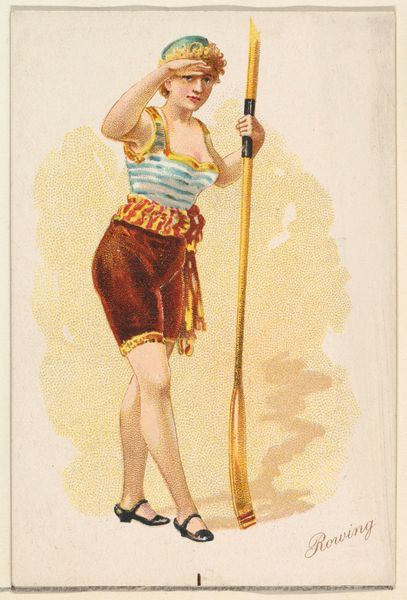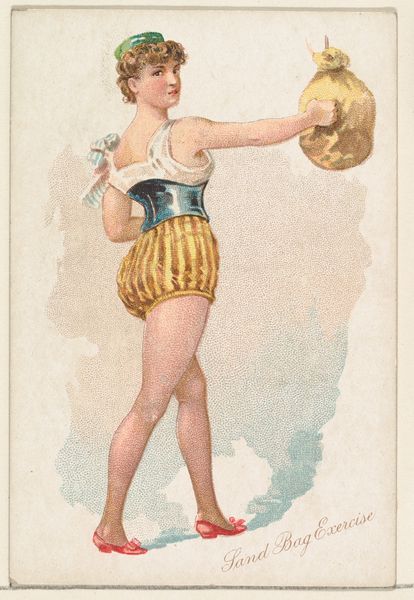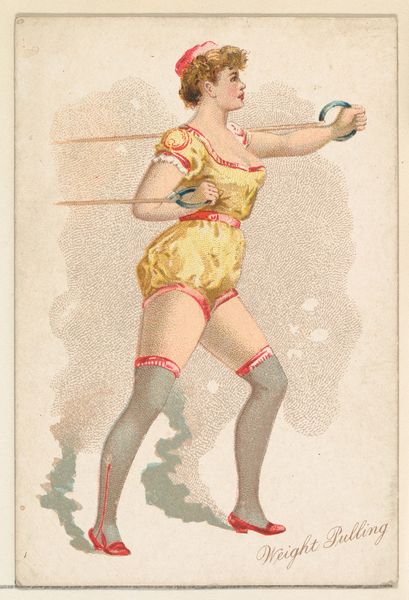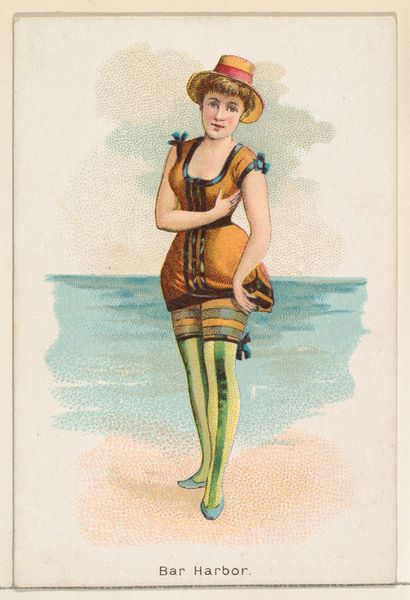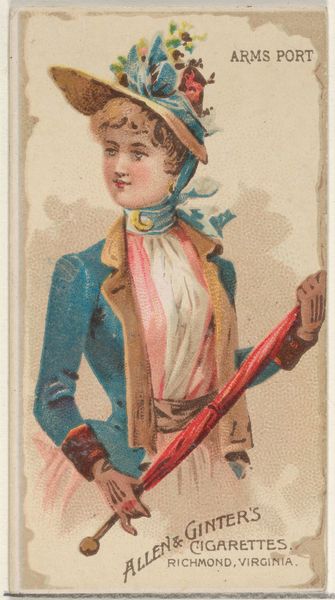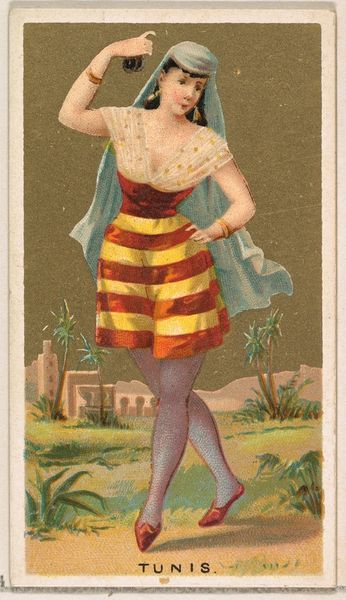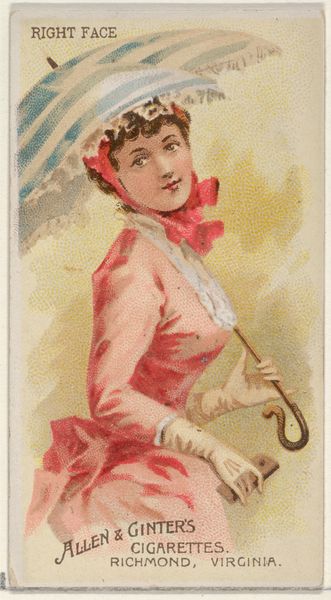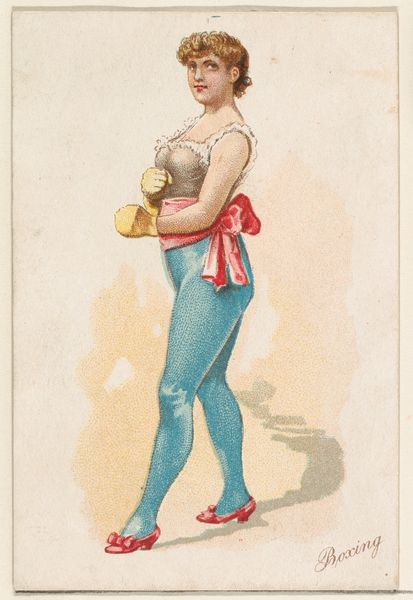
Fishing, from the Pretty Athletes series (N196) issued by Wm. S. Kimball & Co. 1889
0:00
0:00
drawing, coloured-pencil, print
#
portrait
#
drawing
#
coloured-pencil
# print
#
caricature
#
caricature
#
figuration
#
coloured pencil
#
genre-painting
#
post-impressionism
Dimensions: Sheet: 3 3/4 × 2 1/2 in. (9.5 × 6.3 cm)
Copyright: Public Domain
Editor: This is "Fishing, from the Pretty Athletes series" created by Wm. S. Kimball & Co. in 1889. It’s a colored-pencil drawing, seemingly reproduced as a print. I'm struck by the almost absurd juxtaposition of high-society dress with… well, *that* fishing outfit. How can we approach something like this? Curator: From a materialist perspective, let's consider the production of this image. It's a mass-produced print intended to be collected, included in cigarette packets. How does its status as a collectible, cheaply made, influence our understanding? Editor: So, less about the artistry and more about the means of production and consumption? Curator: Precisely. Consider the contrast: the detailed drawing versus its role as a fleeting piece of promotional material. The drawing, in colored pencil, allows for quick reproduction. How does that affect the labor involved in its creation? Think about the artisans, potentially women, involved in color separations, engraving or lithography and the wider economics around the tobacco industry and collectible card craze. Editor: I see... so it’s almost an anti-art object. Something created for the masses. It questions traditional distinctions between “high art” and a more functional object. Curator: Exactly. And further, look at what’s *represented* – “pretty athletes”. It seems a light-hearted take. But what labor underlies leisure? What materials are employed for manufacturing this type of ‘fantasy’ figure? Also, what material supports or contains them and its inherent waste: the cigarette pack? How might these considerations shape the work’s meaning, the maker's purpose and who the likely audience might be? Editor: Wow. I never thought of it that way. It completely reframes my initial perception! Thanks! Curator: My pleasure. Seeing art through the lens of materials, labor, and distribution really opens it up, doesn't it?
Comments
No comments
Be the first to comment and join the conversation on the ultimate creative platform.
